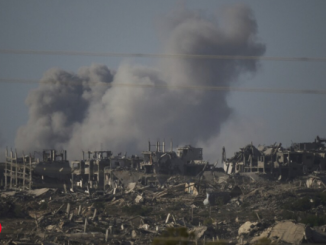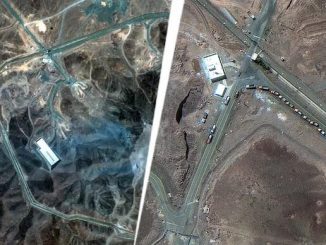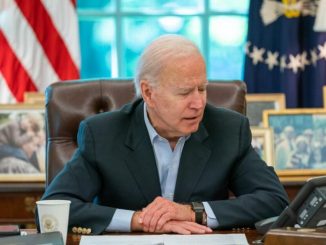
A shirt bearing ISIS insignia, found on a terrorist who attempted to carry out a terror attack in Qalandiya, the West Bank, December 7, 2024. (photo credit: Police Spokesperson )
| Published June 10, 2025
The people were reportedly arrested after ammunition, machine guns, grenades, and various other weapons were discovered.
Iran has carried out the execution of nine individuals convicted of participating in a deadly 2017 Islamic State (ISIS) attack on Tehran, according to official statements from the Iranian judiciary. The executions took place against the backdrop of broader security measures and rising concerns over extremist threats in the region. The development has drawn attention both for its judicial implications and for its timing, as tensions remain high in the Middle East.
Execution Details and Legal Process
The Iranian judiciary confirmed on June 10, 2025, that the nine individuals had been hanged after being found guilty of direct involvement in the June 2017 twin attacks on the Iranian parliament and the mausoleum of Ayatollah Ruhollah Khomeini. Those attacks resulted in 18 civilian deaths and were among the first major ISIS-claimed operations on Iranian soil.
According to Iranian state media and judicial officials, the convicted individuals were arrested in the months following the attacks and faced charges related to terrorism, armed assault, and cooperation with foreign militant organizations. The judiciary stated that the trials adhered to the legal process under Iranian criminal law and that the executions were carried out after final appeals were exhausted.
Background on the 2017 ISIS Attacks
The June 7, 2017, attacks were the first publicly acknowledged ISIS assaults within Iran and marked a significant escalation in the group’s regional operations. Armed assailants, reportedly disguised as women, stormed the parliament building in central Tehran, leading to a prolonged siege and gun battle. Simultaneously, another team attacked the Khomeini shrine in southern Tehran using rifles and suicide vests.
At the time, the Iranian Islamic Revolutionary Guard Corps (IRGC) accused Saudi Arabia and its allies of supporting extremist Sunni groups, although no direct link was officially established between the attackers and any state actor.
Security Measures and Surveillance
Following the 2017 attacks, Iranian authorities launched widespread security operations targeting suspected ISIS cells and affiliated networks across various provinces, including Kermanshah and Kurdistan. These operations reportedly led to dozens of arrests and the confiscation of weapons, explosives, and communication equipment.
The Ministry of Intelligence also increased surveillance of individuals with known connections to jihadist networks operating in Syria and Iraq. According to statements from Iranian officials, the recently executed individuals had allegedly traveled to conflict zones in Syria for training and returned to Iran to conduct operations.
Public and Official Reactions
The executions were reported by multiple Iranian media outlets and confirmed by the judiciary’s official website. While domestic reactions have varied, official sources emphasized the role of the Iranian legal system in delivering justice and deterring future terrorist acts.
The IRGC and senior members of Iran’s security establishment issued statements praising the judiciary’s decision, framing the executions as a reaffirmation of the country’s resolve to protect national security and counter terrorism within its borders.
Regional Context
The timing of the executions comes amid continued instability in neighboring Iraq and Syria, where remnants of ISIS remain active. Iranian security officials have repeatedly voiced concerns over cross-border infiltration and the resurgence of militant networks. Iranian forces, including the IRGC Quds Force, maintain a presence in both countries under the pretext of supporting allied militias and preventing extremist spillover.
Implications
-
Demonstration of Iran’s Zero-Tolerance Policy Toward Terrorism
-
The executions signal a continuation of Iran’s firm judicial response to acts of terror, reinforcing its commitment to delivering capital punishment for attacks targeting state institutions and civilians.
-
-
Reaffirmation of State Control and Internal Stability
-
By carrying out high-profile executions, Iran reasserts its authority and control over internal security, particularly in the wake of past attacks that struck at symbolic and governmental centers of power.
-
-
Heightened Surveillance and Intelligence Activities
-
The case reflects increased intelligence efforts and surveillance operations targeting jihadist networks and individuals with foreign combat experience, particularly those with links to Syria and Iraq.
-
-
Reinforcement of Iran’s Narrative on Regional Security
-
Iranian officials often portray their regional military involvement as necessary for counterterrorism. These executions may bolster public justification for Iran’s continued operations in Iraq and Syria.
-
-
Impact on Judicial and Human Rights Discourse
-
The mass execution may prompt renewed scrutiny from international human rights organizations, especially given longstanding concerns over due process, transparency, and the use of capital punishment in Iran.
-
-
Possible Deterrent Effect Against ISIS Affiliates
-
The move could serve as a warning to other ISIS-linked operatives or sympathizers within Iran, potentially deterring future recruitment and domestic attacks.
-
-
Potential for Diplomatic Tensions
-
Iran’s allegations of foreign support for ISIS in the past, particularly pointed at Gulf states, could reignite diplomatic friction depending on how the narrative around the executions is framed by state media and officials.
-
-
Public Messaging to Domestic Audiences
-
The executions may be used as part of a broader campaign to demonstrate the government’s capacity to protect citizens, maintain order, and respond forcefully to threats from extremist groups.
-
Overall Takeaway:
The execution of nine individuals convicted of involvement in the 2017 ISIS attacks in Tehran marks a decisive moment in Iran’s ongoing efforts to confront domestic terrorism. It underscores the state’s use of its judicial system to address security threats while highlighting the enduring impact of ISIS’s presence in the region. The move also reflects Iran’s broader posture toward militancy and internal security at a time when regional tensions remain volatile and the legacy of past attacks continues to shape its national defense policies.
SOURCES: THE JERUSALEM POST – Iranian media says regime hangs nine alleged ISIS members – report
AL ARABIYA – Iran hangs nine convicted ISIS members: Judiciary
MIZAN ONLINE NEWS AGENCY – Execution of 9 ISIS terrorists carried out
NEWSDAY – Iran says it executed 9 Islamic State group militants detained after a 2018 attack





Be the first to comment